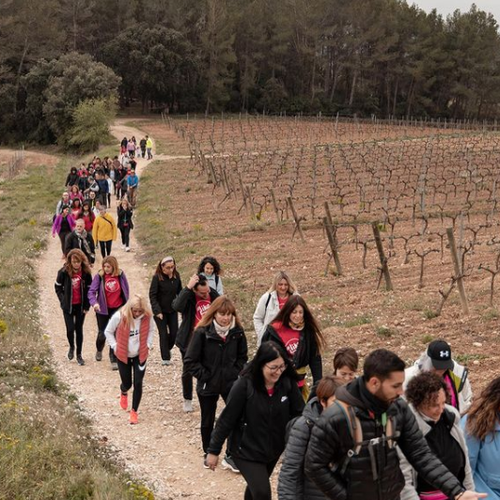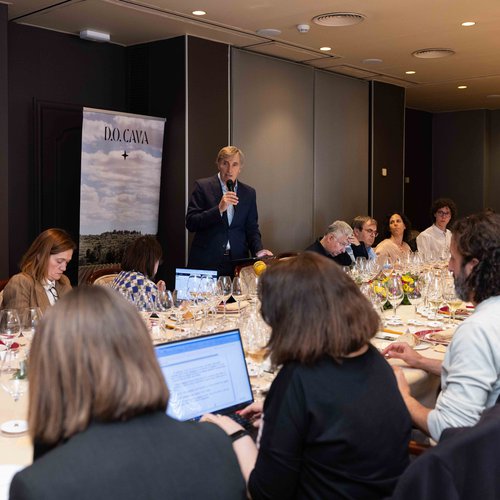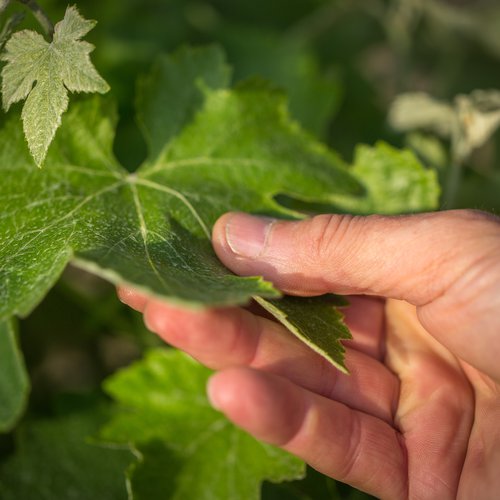Cava Harvest - History, method and processes
Vintage of Cava - History, method, processes and bottling
To speak of Cava is to speak of tradition. Cava was created in the wine-growing area of Penedés, a land where Phoenicians, Greeks and Romans left their mark on the relationship with the vine and the passion for wine production. Although most Cava production is in the Comtats area of Barcelona, it is also made in other municipalities, which results in a great deal of nuances provided by the microclimate of the area in question.
Its excellence comes through in its unique quality and personality. The harvest is one of the key moments in a long process that begins with great care in the land and concludes with the enjoyment of the final product, the end result of a great effort by the farmers, wineries and the Regulatory Council.
Working the harvest is no easy task. It is a very beautiful time, but one of very intense work in which several factors are at play: the weather, the care of the vine, the constant monitoring of the grape ripening process and all the logistical aspects that affect the pickers, transporters and warehouse personnel.
“The harvest is a time of mixed feelings. Emotion, joy, nerves, an eagerness to start and also a desire to finish. It's a very beautiful time, the culmination of a whole year's work. But you have to work very hard to make sure it all goes well. There are many people involved and several factors that have to be controlled."
When does the Cava harvest start?
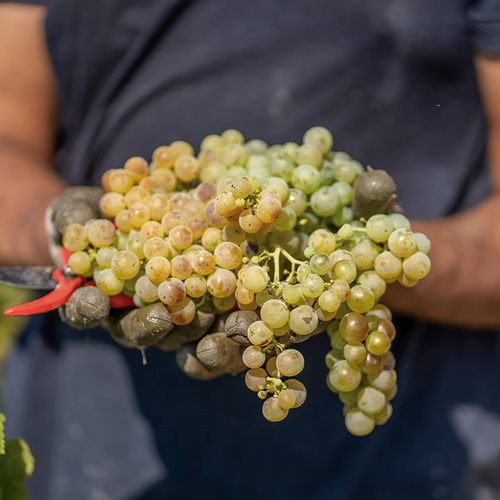
It starts once the grape reaches phenolic ripeness, which is measured by analysing the seeds and skins. Grape ripeness is a key factor in the concentration of aromas and other phenolic compounds, such as tannins and sugar.
A winemaker will also get a precise idea of the ripeness of the grapes and their degree of acidity depending on the type of product they want to create. In the Cava harvest, it is important that the degree not be very high. The pH should be low and the acidity high to create light-bodied and very fresh base wines.
“The grapes we use to make Cava are usually harvested a little earlier than those used for still wines. We try to make it have a lower likely alcohol content and a touch more acidity, which makes the final product fresher and livelier. If the grapes were very ripe when harvested, the Cavas would be strong-bodied and warmer."
Cava is harvested by variety in a staggered fashion, and the start date varies from year to year, determined by a sum of meteorological factors in which the general health of the grape prevails: rain or storms can delay or advance the harvest season.
The first harvest historically began in September with the Macabeo variety, and ended with the Parellada, whose harvest extends until the middle or end of October in the coldest and highest areas.
You can read more about the grape varieties authorised for making Cava here.
How long does the harvest last?
Historically, the Cava harvest took place in the months of September and October. The increase in temperatures in recent years due to climate change has resulted in earlier and earlier harvests, with the season now starting in early August in some areas.
"We've been having warmer temperatures for years, and we're having to harvest earlier and earlier. In terms of preventive measures, we have decided to till every 10 or 12 days in July and August to make sure there are no grasses that are competing with the vine for the scarce water resources. It is also a good way to break up the soil and prevent water from evaporating. In winter, the vines were deep tilled to aid water retention."
On top of the rising temperatures are the water problems. These days, managing the vineyard means doing everything possible to improve its retention capacity.
“The lack of water is compounded by the high temperatures, which increase evaporation. Work is ongoing throughout the entire production cycle of the vineyard to try to conserve the little water that falls as snow or rain in the winter."
Harvesting methods: Manual or mechanical
There is no single way to harvest. It can be done manually or mechanically, during the day or at night. Hand harvesting is the traditional way of working and consists of collecting the bunches using large, curved harvest scissors. When cutting manually, the bunches can be screened by removing the green or damaged parts.
"If the harvesting is done by machine, it is done at night. Although now, due to climate change, the manual harvest also begins very early, almost at dawn, to avoid the hours of most sunshine."
For those vineyards with a trellis and no steep inclines, machine harvesting is an option. This system allows the grapes to be harvested quickly and uniformly, without waiting for labourers to become available.
"We harvest by machine or by hand, depending on the type of Cava we are going to make. The oldest vineyards, which are traditionally gobelet-trained and are set aside for Cavas de Guarda Superior (Reserve or Gran Reserva), are usually hand-harvested. Mechanical harvesting is done at night to avoid oxidation. It is faster and yields excellent results for shorter aged cavas."
During the harvest
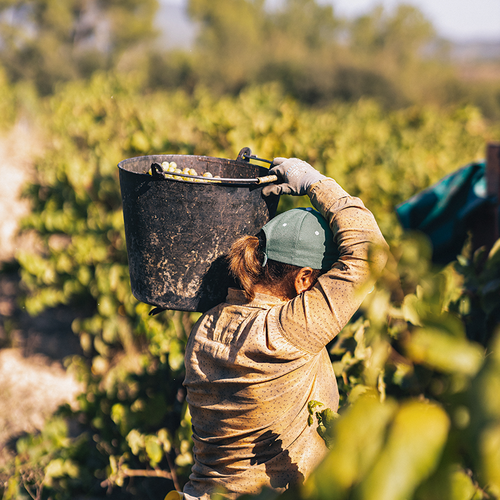
The bunches collected are deposited in baskets with a capacity of 10 to 12 kilos. Many farms use small dumper trucks that can be pulled right up to the vineyard. They can transfer the grapes quickly and hygienically to the winery, which helps keep them from potentially oxidating early.
Cleaning and disinfecting all the machinery is essential. The wineries get ready for this moment with well-defined protocols to receive the different varieties, based on the origin and type of wine (conventional, organic, etc.). The necessary wine-making products are purchased well enough in advance, and machinery is rented as necessary.
"It is extremely important that the winery be set up to receive the grapes. Part of the machinery is only used four to five weeks a year and requires significant adjustments. Often, this also means an increase in staffing. It is rewarding to be on a team that is brought together to work towards the same goal: to make quality wines."
Quality control
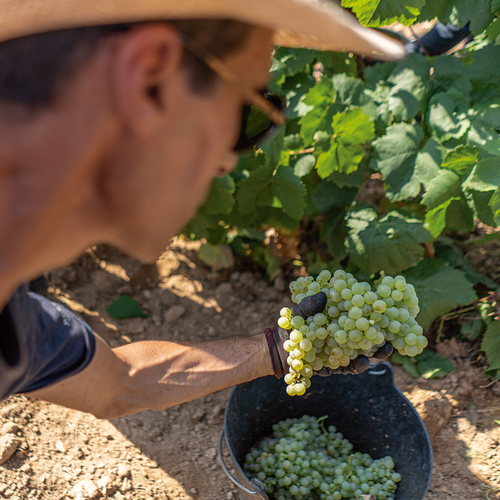
The rigorous controls and requirements of the Cava Regulatory Board guarantee the quality of all the sparkling wines protected under the Cava D.O. The regulations cover different aspects, from the vineyard to the finished product.
During the harvest season, the Regulatory Board has about 80 inspectors who oversee and control the delivery of grapes from the producers registered with the D.O. They also certify that the degree of ripeness meets the regulatory requirements.
"Every week we alternate plots and take random samples of about 100 grapes, which are taken to the laboratory where the checks are done: the grapes are weighed, the acidity, sugar content and density are measured, and any potential imbalance in the plants is identified."
The type of transport is regulated, as are the maximum distances that can be travelled from the plot to the receiving hopper. The requirements also specify the quantities of must extracted and control of the pressings. Limited to 66% yield for the first fraction, which is the only one that can be set aside for Cava base wine.
"Once in the winery, the variety and the name of the winemaker have to be verified to make sure the grapes come from vineyards registered with the Cava Designation of Origin. If the grapes are organic, they are also verified to be listed in the CCPAE. When the trailer reaches the scale, the weight is verified to be within the maximum allowed by the Regulatory Board. "
Once the grapes are received in the winery, multiple parameters - most of them regulated by the Cava D.O. regulations - must be checked in the laboratory. Measurements are taken for potential alcoholic strength, acidity, pH, gluconic acid and polyphenol levels, colour, and more.
“Samples are collected from all the wines that are being clarified. We make sure the acidity is correct, the nitrogen content is determined to know whether or not to add nutrients during the alcoholic fermentation. We then do organoleptic tasting of all the wines that are fermenting to know if they need a transfer, if the fermentation is finished or not, or if they need any supplementary analysis."
Types of Cava and plots
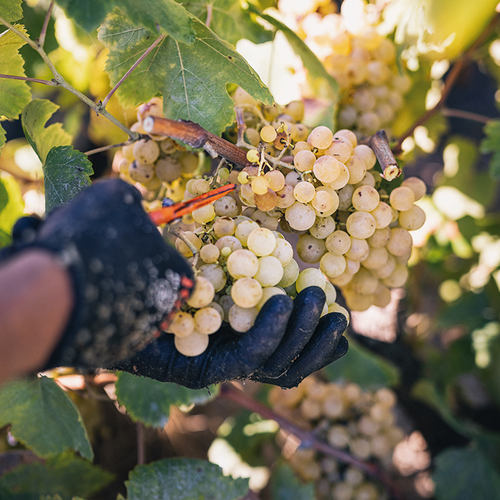
The Cava Designation of Origin sets a production limit depending on the type of Cava. The maximum production allowed for the 2022 harvest for Cava de Guarda is 12,000 kilograms per hectare. For vineyards reserved for Cava de Guarda Superior production, it is 10,000 kilograms per hectare, except for the vineyards intended for Cava de Paraje Calificado, which is 8,000 kilograms.
Grapes intended for the production of Cava de Guarda Superior with the terms "Reserva", "Gran Reserva" or "Paraje Calificado", must be delivered, received and pressed by the winery separately from all other grapes. The same applies to those where the terms zone and subzone will be used. It is important to keep in mind that the vineyard must be more than 10 years old, in addition to being grown organically.
The Cava de Guarda Superior de Paraje Calificado, synonymous with the highest quality and exclusivity, requires even stricter controls. For example, Council inspectors go to the vineyard to verify that the harvest is done manually. The grape weights are also monitored, and the gluconic content in the base wines cannot exceed 200 mgr/l.
The Council is also firmly committed to sustainability through the regulation of the Cavas de Guarda Superior, the process for which will be 100% organic from 2025.
Celebrating the harvest
The harvest marks the starting point for many of the activities organised by the wineries around this event. It's a great opportunity to get to know their wines and traditions. You can become a grape harvester for a day or enjoy concerts in the vineyards. For foodie types, there are countless tastings, lunches among the vineyards and dinners under the stars.
Many of the activities can be consulted and tickets can be purchased through the official website of Verema del Cava. In addition, wine and nature lovers won't want to miss the 'Camins del Cava' app, which includes walking and cycling routes to the wineries around Sant Sadurní d 'Anoia.
